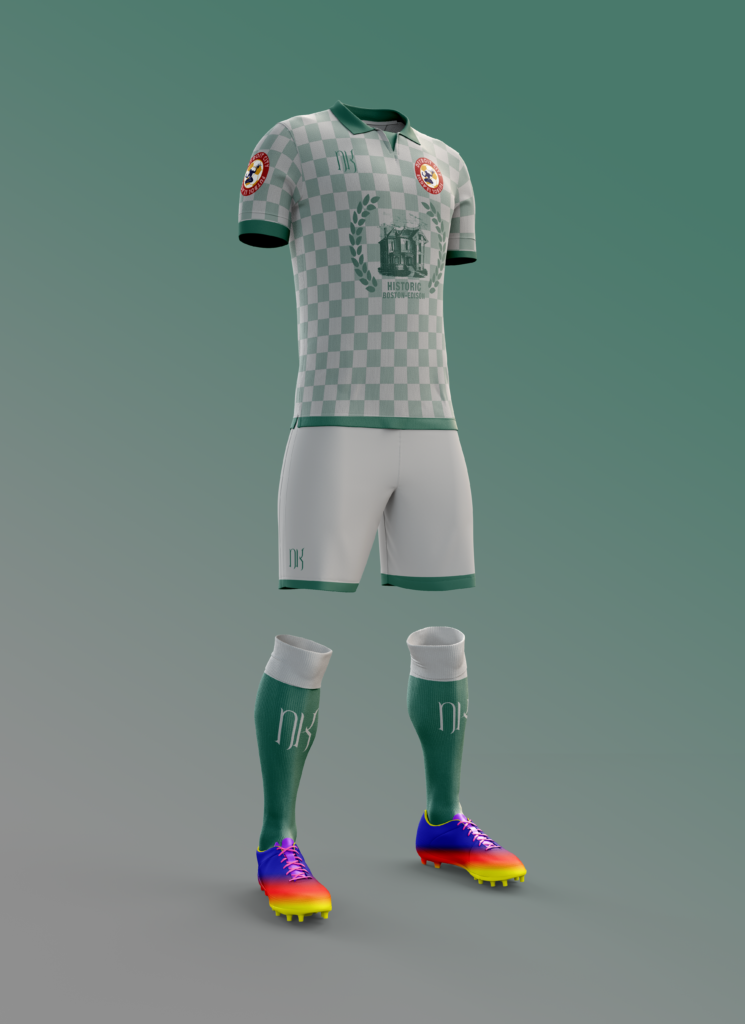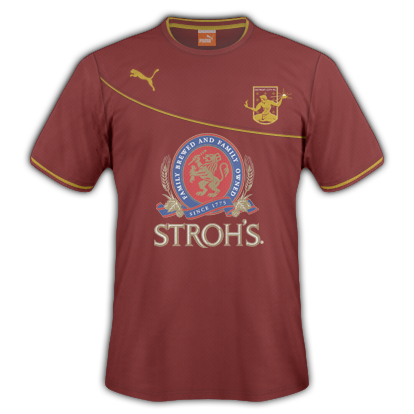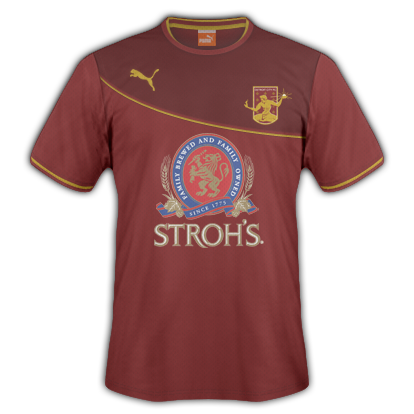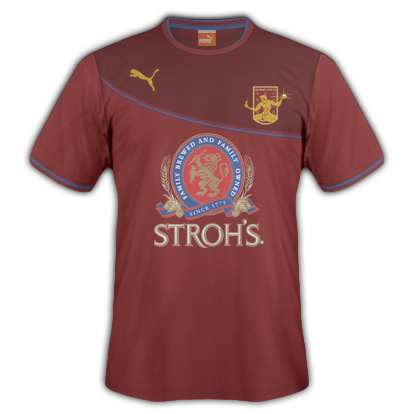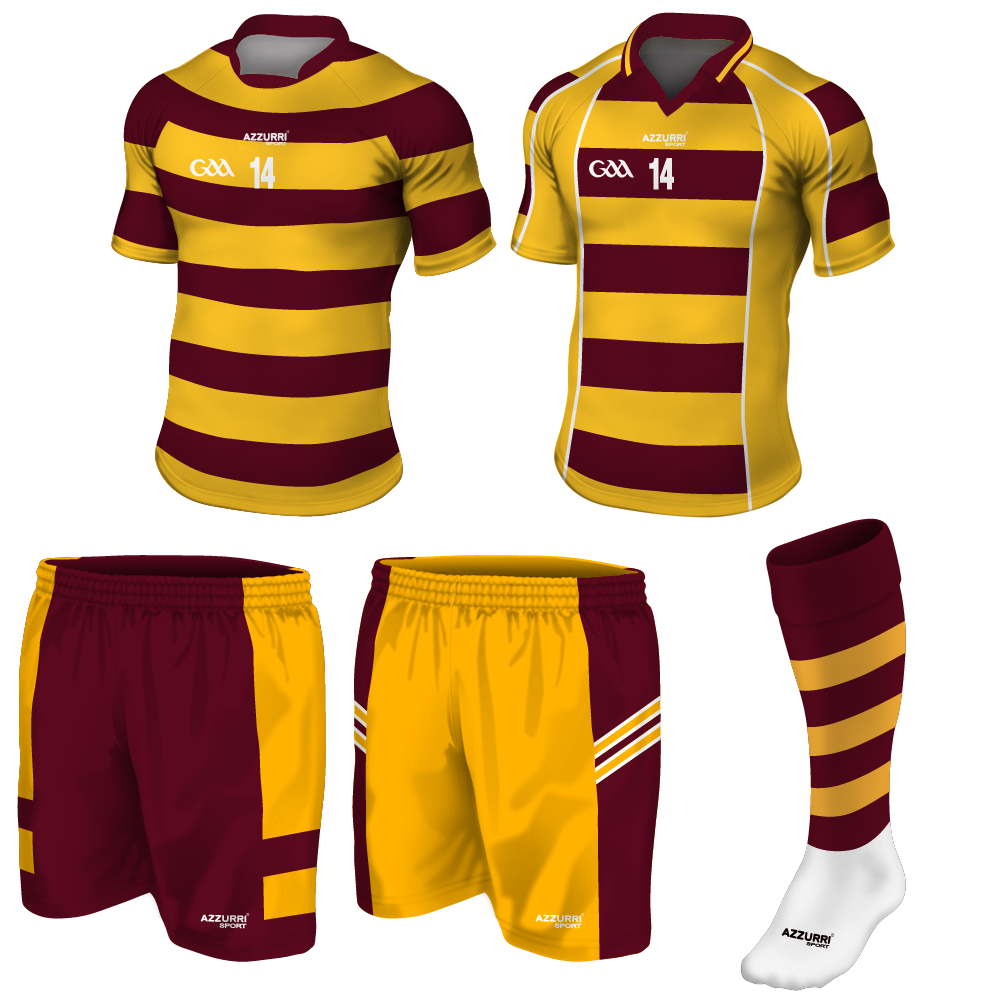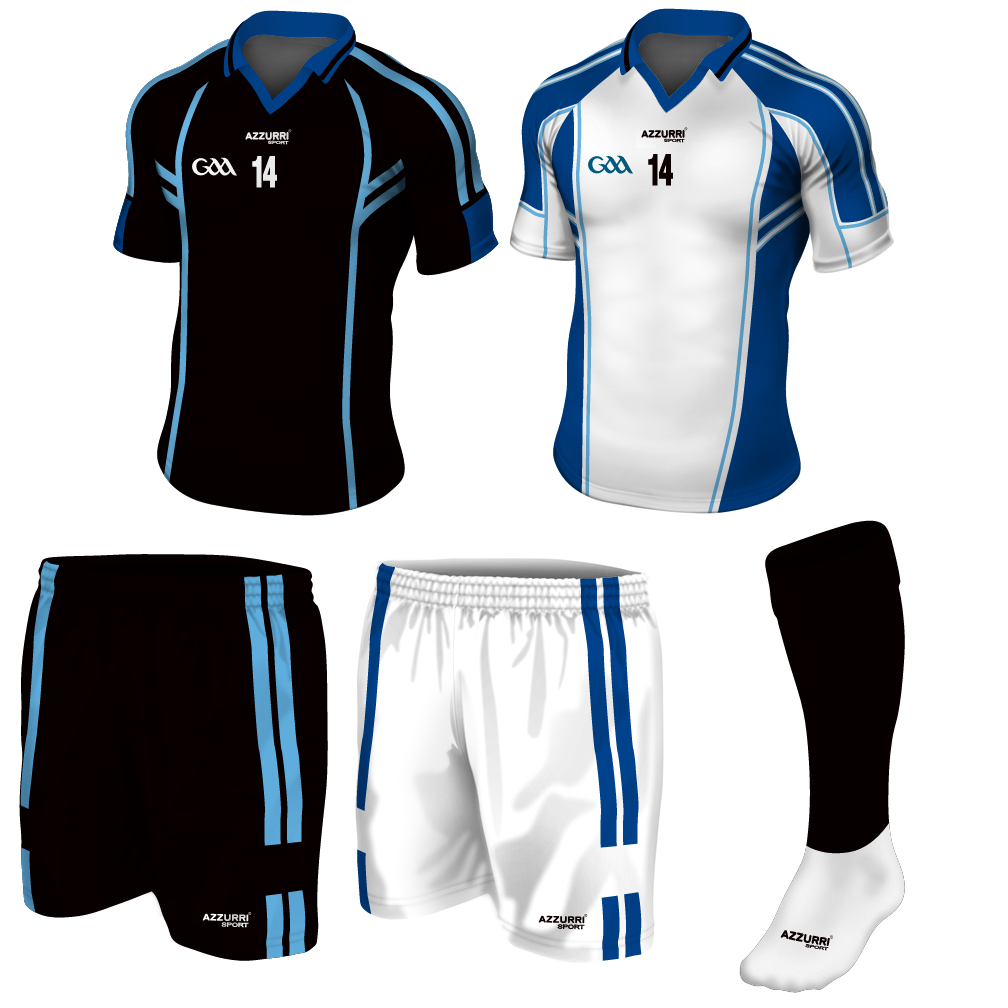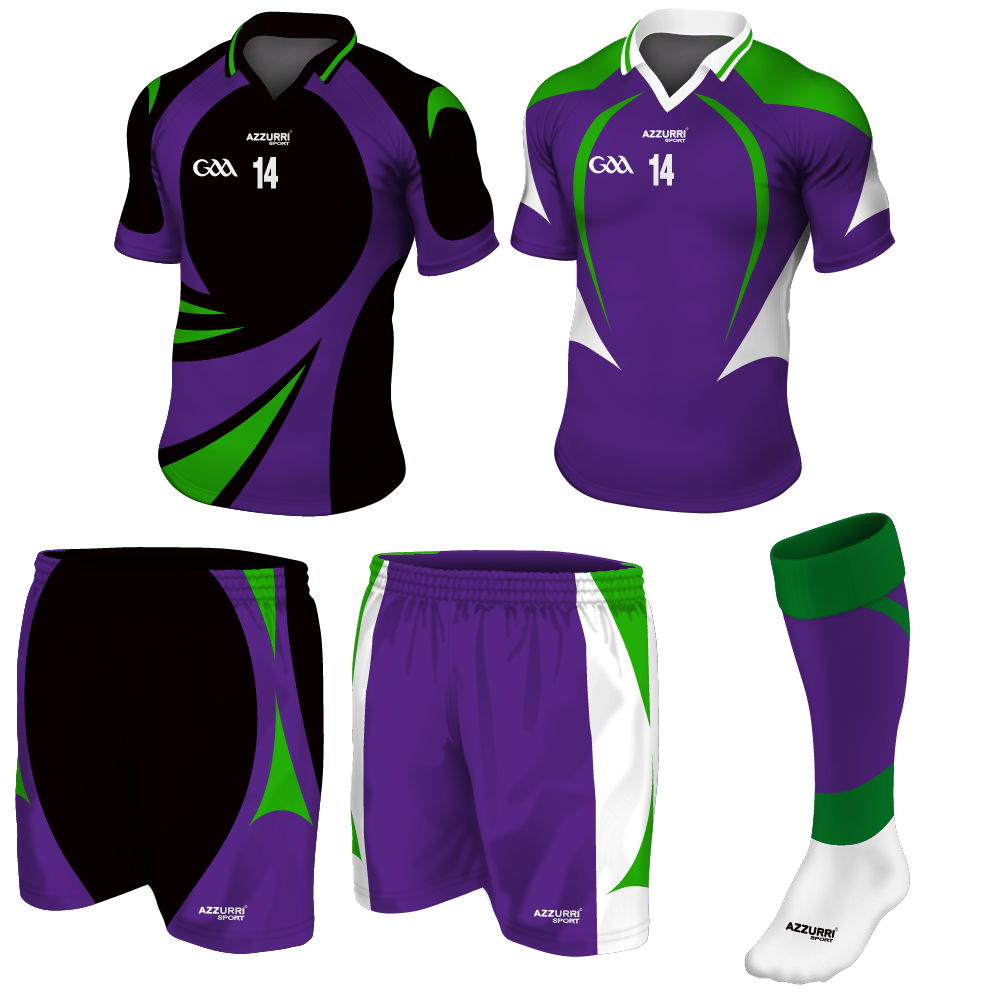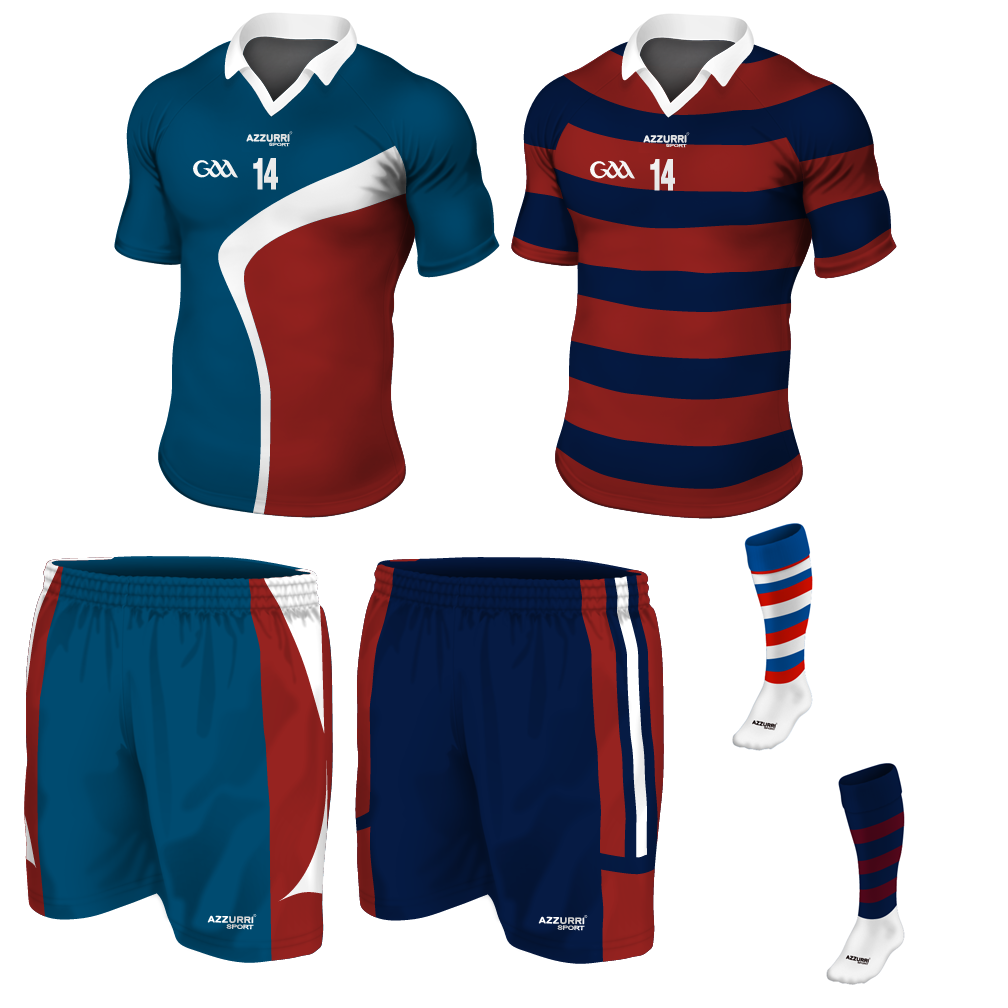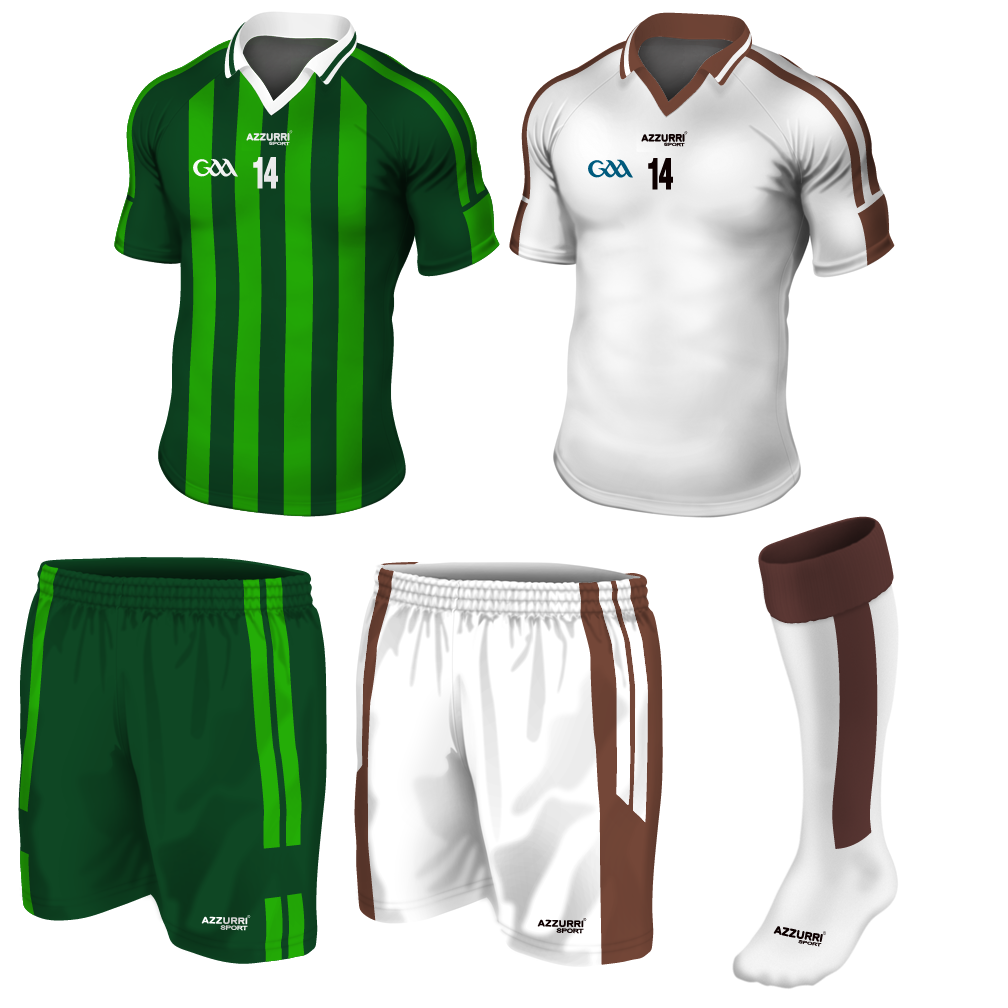I would want nothing more in life to win an award for drawing coastlines. Like most fans of strange, rugged terrain – I am always in awe of the fjords of Norway, though I am ashamed to admit my favorite piece of geography will always be Newfoundland. Not just for its historical context, but also because I feel like if I had to pick a great piece of Earth to plagiarize for a test – it would be Newfoundland. It has it all: gentle coasts, rugged coasts, finger lakes, rivers, ocean, thin isthmuses, and deep forests.
Luckily I write fantasy so it is almost mandatory that I make lots of maps. Lots and lots of maps. I posted previously about adding some level of detail to my maps and now I sort of want to go over my process as an alternative to literally jerking off in front of you all. So sit back and marvel at my genius.
MARVEL DAMMIT.
Anyway, recently I added a great deal to my map partially out of boredom, partially to keep my mind on my writing even when not writing, and partially to just flush out the rest of the world I’ve been writing in. This post will only focus on geography because I tend to actually finish my geography but will fiddle with cultural and political stuff endlessly.
So how can one go about making a map? There are numerous ways, I prefer hand drawn because I can think about the world as I draw and come up with ideas. Some people prefer to use tools or filters to create randomized maps and then place things as they make sense. I feel like world builders prefer the randomness while writers prefer the control but that is an opinion with no meat behind it. I’m a writer and I prefer hand drawn just so my bias is crystal clear.
Starting is a matter of coming up with ideas, or at least a goal in mind. Generally size is a big question. I use engineering paper so I think in terms of how many sheets I want to use. Six to eight seems to be the sweet spot for continents, but obviously continents are not all similarly sized so that might need to change depending. So the first hour or two of work might be done in the car, at work, or eating dinner. Basically I come up with ideas for what the terrain should look like, what kind of features are needed to support ideas for cities, nations, or cultures.
And that is the key – I usually decide what kind of places and people I need before I start drawing. If I need highlanders, I will draw mountains. If I want an oceanic civilization, I will draw safe harbors – only rarely the other way around and then usually as secondary thoughts or filler. Some world builders might gasp, but maybe not. I’m not terribly involved in their world (haw hee haw hee haw).
So I fill up engineering paper and eventually a sheet looks like this.

It’s hard to explain how I draw the lines because I just draw them. I assume it is not hard. Just draw lots and lots of squiggles. It probably sounds patronizing or self-aggrandizing but I’m not really sure what to say. Draw something, decide if you like it, if not erase it and redraw it. Simple as that. Only show what you like.
To do edges I have a top secret technique of counting boxes and then marking the point the line cross the dark green as best I can on the second page. And if they don’t match exactly that is okay, there are steps to hide that.
I usually also keep a sheet that has the layout so I can number the map sheets and rearrange them later. Counting boxes and some hand math makes for pretty accurate mapping if needed, so I can’t recommend getting a stack of engineering paper highly enough. Plus who doesn’t love engineering paper?
Eventually they all get smashed back together.
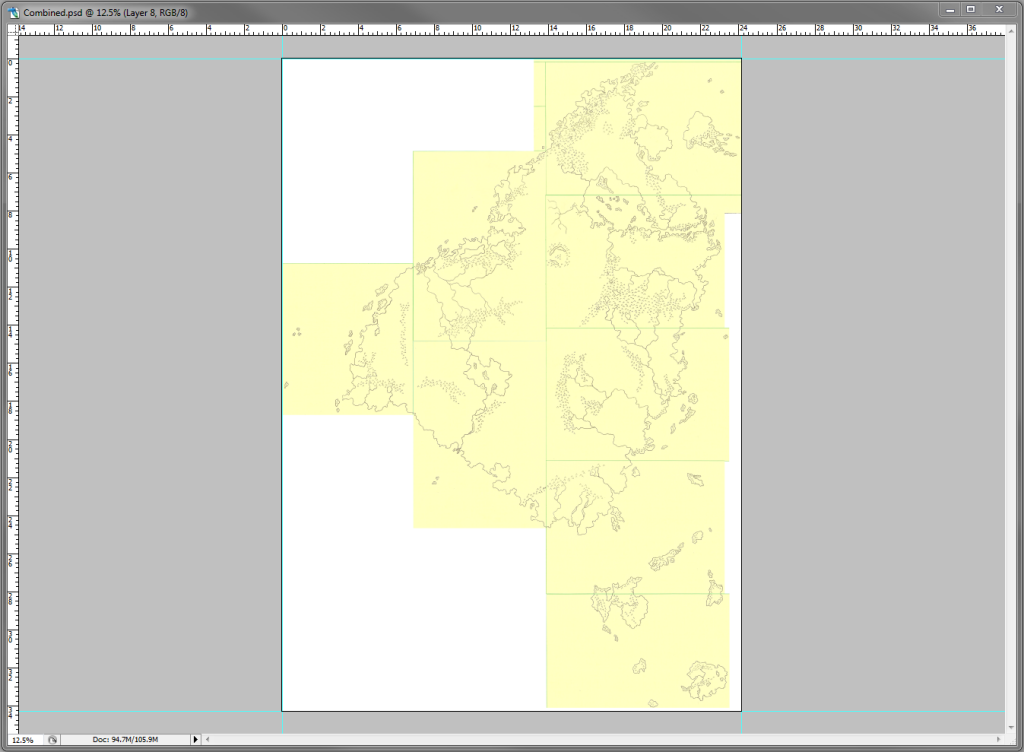
I do this in CS2 and this file is generally pretty huge. I scan them in at 200dpi. Why 200? Because I accidentally did that for the first several sheets a few years ago and everything has needed to match since. So 200 it is.
In CS I have a number of layers I’ll use with different stuff like rivers, water, boarders, and then eventually meta-stuff like political regions, linguistic, and even religious areas. This makes it easy to flip through data and keep boundaries consistent in the case of needing changes. E.g. if People A only worship God A, if I change where people A live, I better also change where God A is worshipped.
Anyway, getting ahead of myself.
Second step is tracing. This usually doesn’t take too long and can be relaxing as well as a good time to fix any near misses. I think the furthest I was off with this map was an eight of an inch, which is pretty good given that it was eight sheets some portrait and others landscape and three not aligned to the given edges.
Borders are done on their own layer so I can play with them later.
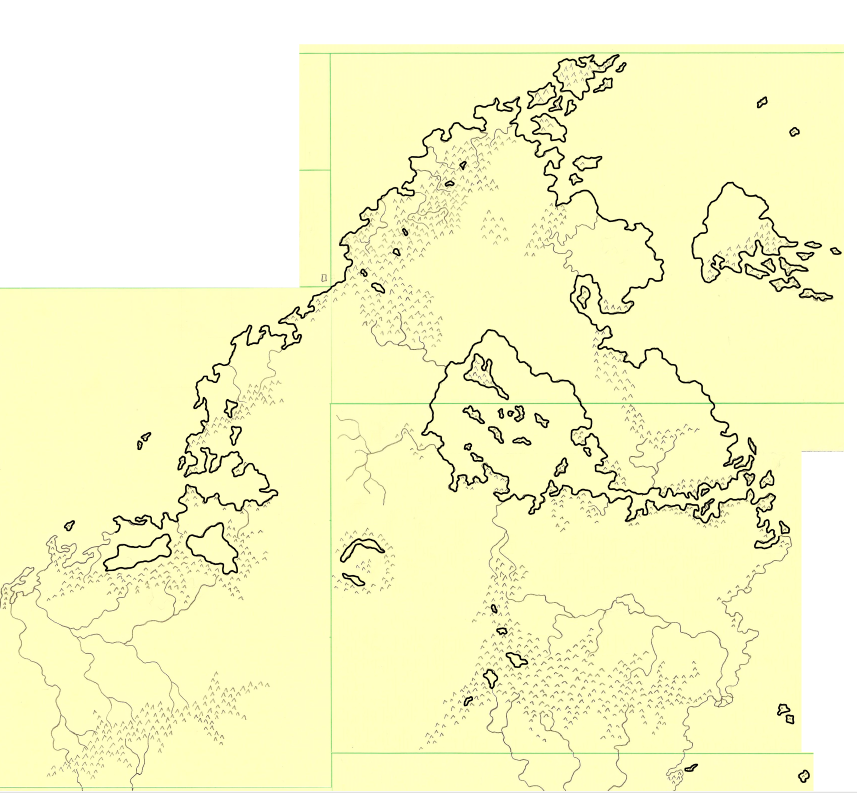
That lake and inlet are by far some of my favorite geography to date. Very proud of it.
Once everything is outlined, I copy the border and merge one into a white sheet, run a threshold, then run a filter that creates flattened, trippy maps based on black lines.
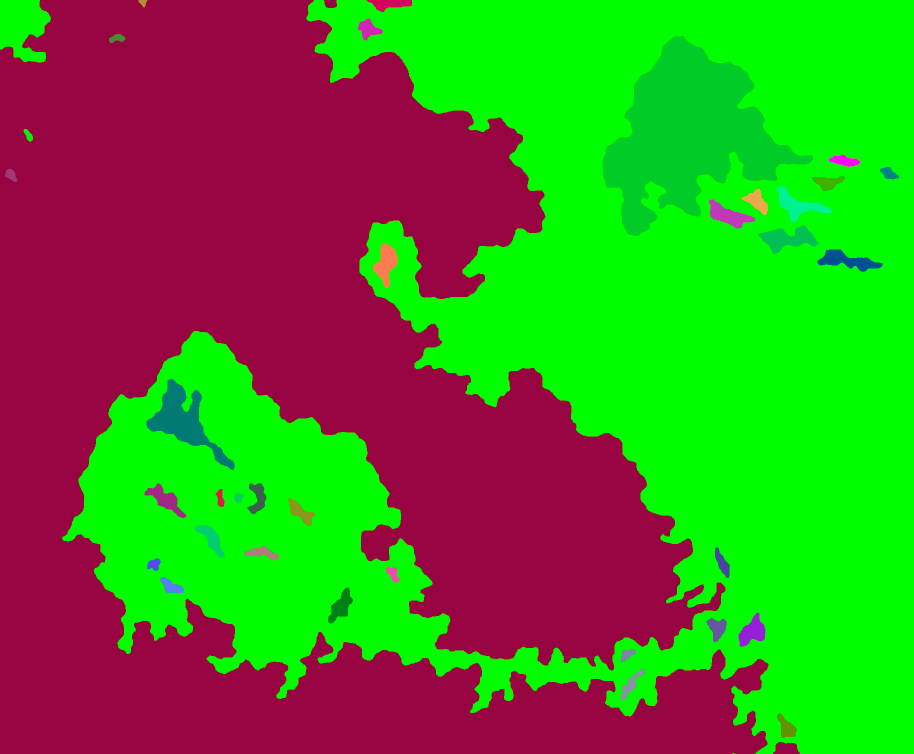
This allows me to quickly and easily color water blue and land white. Which I need for making rivers, which is step four.

Rivers are part traced from the original yellow sheets and part free-hand. Getting them to look right is a pain in the ass. Rivers are essentially fractals. They are curvy no matter how far you zoom in or out.
There is a science that is pretty easy to understand about how the curves in rivers form and they are actually pretty regular – when a river is allowed to run unimpeded down a flat plain. The Nile and Mississippi are good-ish examples of large rivers allowed to run their course, while the Ohio and Colorado are good examples where things like mountains and gorges might have some say.
Yes I know the Grand Canyon was formed by the Colorado River, but sometimes one digs their own grave.
Have I mentioned I am not a geographer? If not – I AM NOT A GEOGRAPHER DO NOT LISTEN TO ME I WRITE FANTASY NOVELS AND MAKE FANTASY MAPS.
After I get rivers set I start doing terrain and biomes. I usually sketch a rough idea of where mountains go on my maps, but nothing else. I then decide as I draw where things go. Unfortunately, while I have a basic understanding of geography, I’m also not a climatologist so I have to sort of guess where things like rain shadows go.
The other problem is my drawing style has been changing over the last few years. It’s pretty solid, but I’m better with small details. Mountain ranges aren’t many hundreds of kilometers thick anymore – they have a bit of variance. Of course this means that my northern continent and southern continent are slightly different visually. Hopefully it is not too noticeable.
Each terrain feature gets a layer and I usually do them one at a time starting with mountains and ending with “rare” terrains like large fens/marshes.

Eventually all those layers start stacking up to something that looks nice!
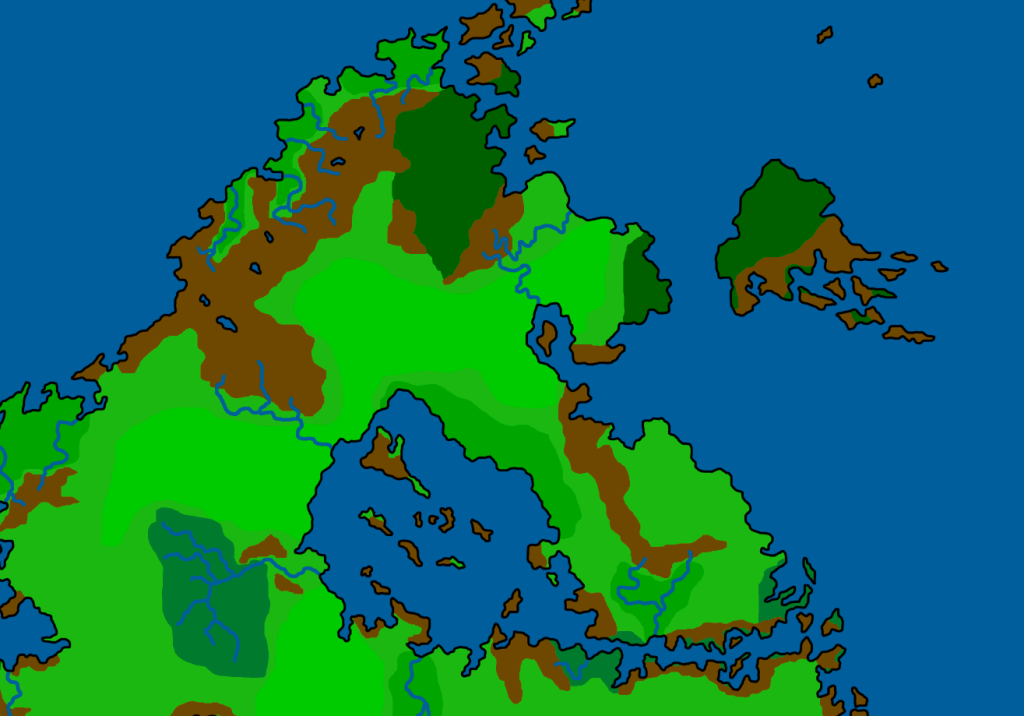
Something that comes much later, and only if needed, is adding map icons for terrain. I usually add cities as part of the “politics and sociology” part, so I’m not covering it in much detail here. Though, as an overview, humans like water and cities should congregate near water or abundant resources. Important cities should be in important places: straights, major river fords – never buried deep in the mountains (though that might be good for major fortresses).
So I dig out the Tolkienesque map brushes and get to work (switching to the Northern continent).
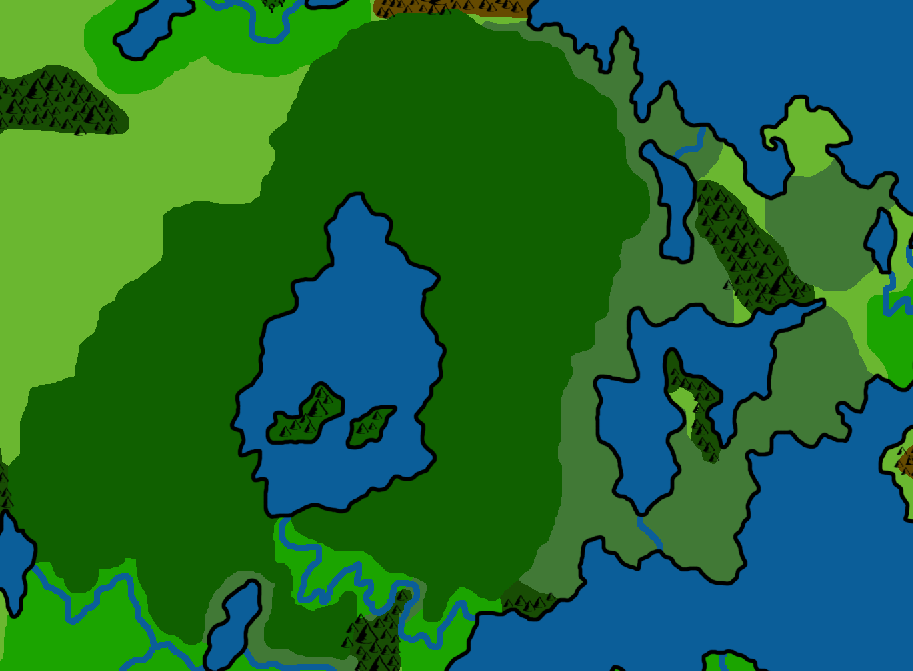
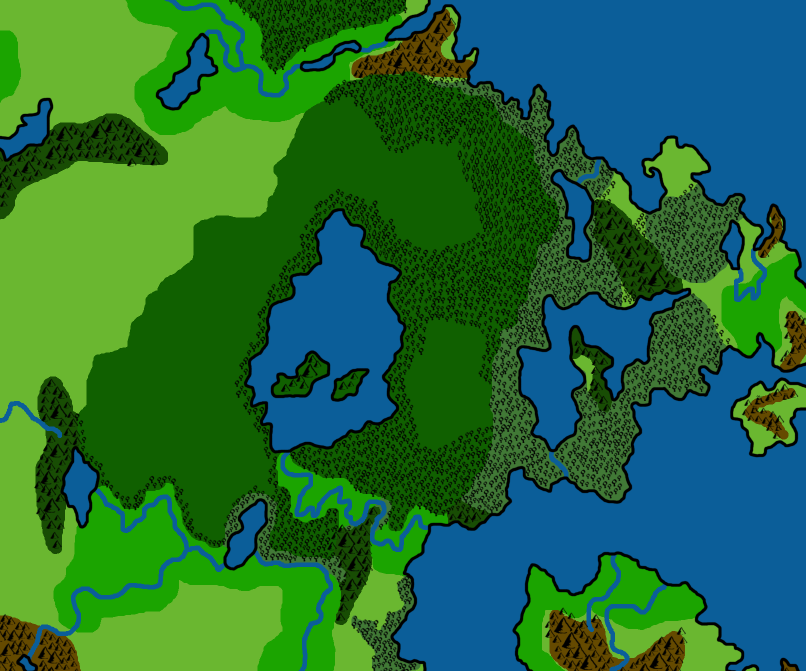
Then intent is it should eventually look good in black/white.
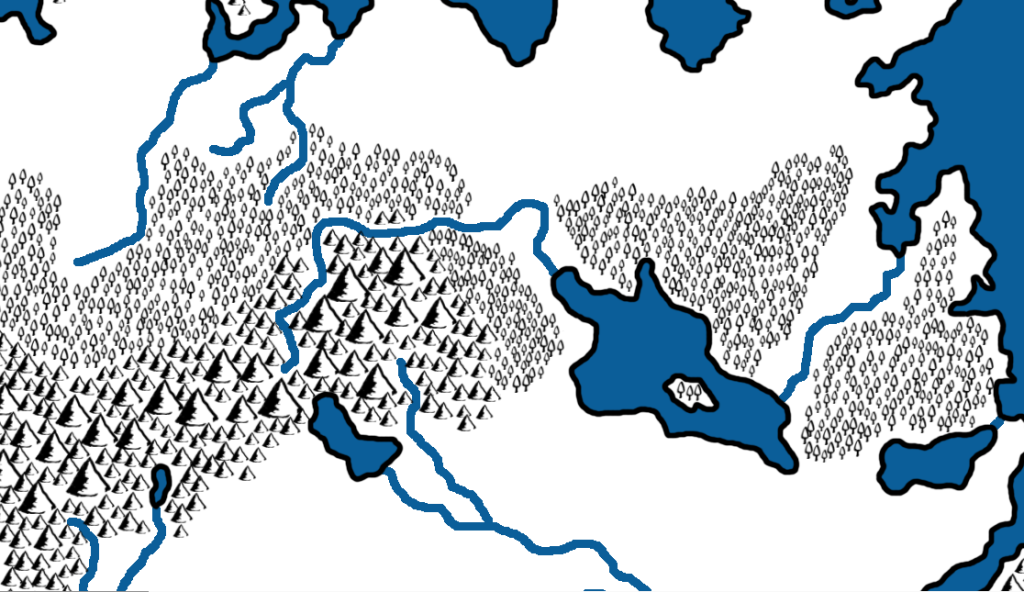
I also do a fine detail version (shown above) and a coarse detail version (more cut out for printing).
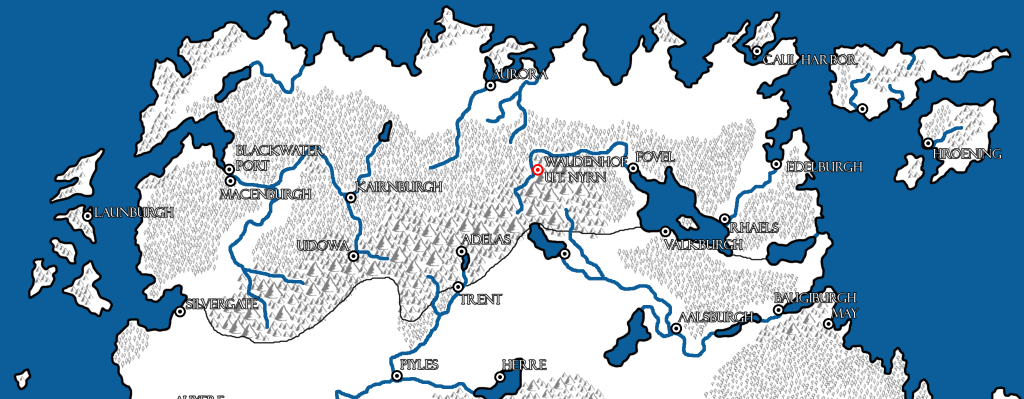
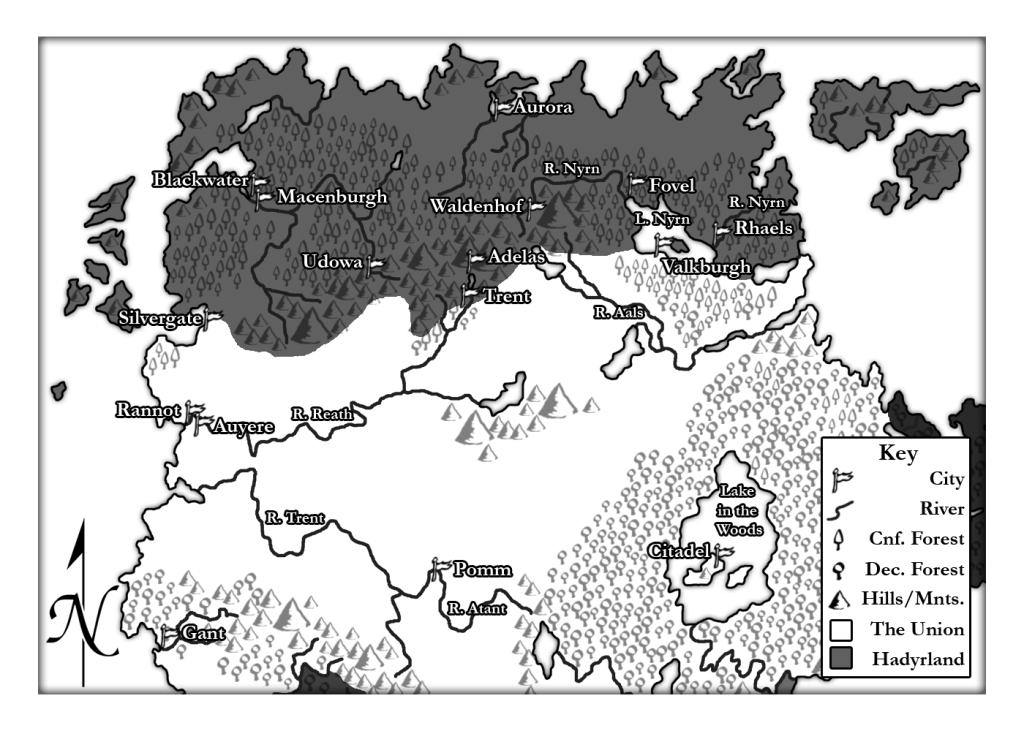
Unfortunately wordpress cuts into the detail.
But to give you an idea, here are a couple of finished black/whites of my northern continent (where Sun-King takes place).
Hadyrland with Cities
The Whole Damn Thing
Cheers guys! Perhaps conlanging next time?

